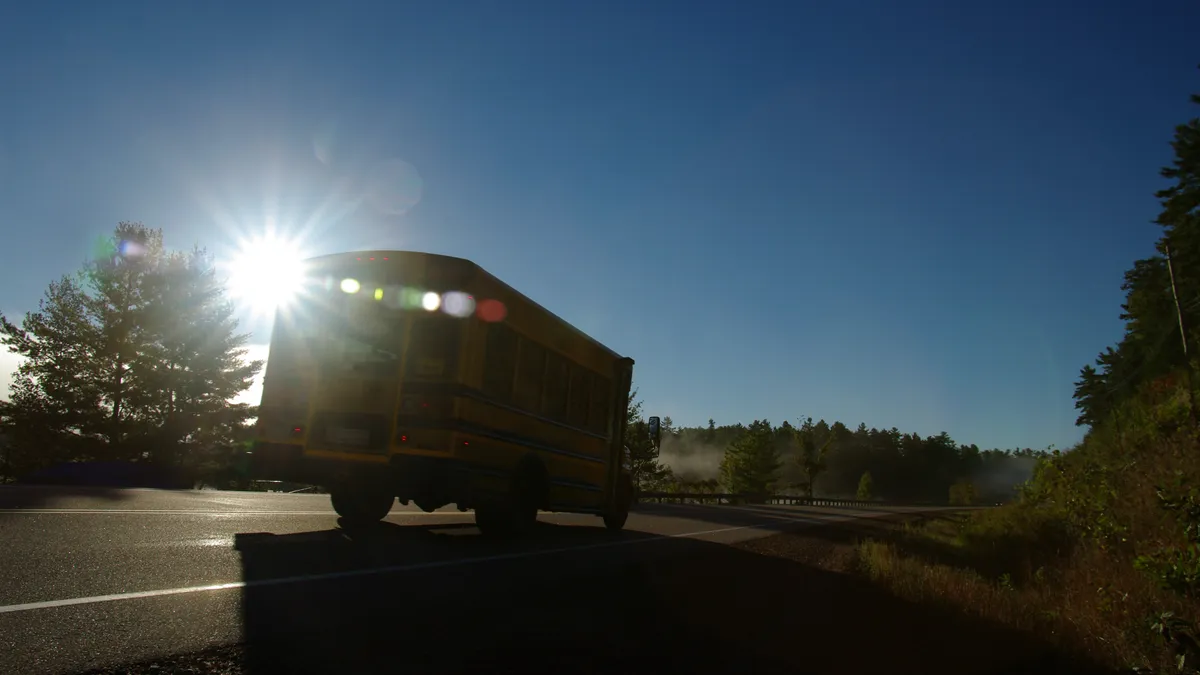Dive Brief:
- Due to increased demand, the U.S. Environmental Protection Agency announced Thursday that the total funding distributed to districts for clean school bus rebates this year will nearly double from $500 million to $965 million.
- EPA received about 2,000 applications from school districts requesting nearly $4 billion for more than 12,000 low- and zero-emission school buses by the time the application program closed in August, the agency said in a statement.
- Funding applications are still being reviewed, but the EPA expects to notify selected districts in October if they have been approved to purchase new buses and “eligible infrastructure.”
Dive Insight:
These awards will mark the first round of funding from the EPA Clean School Bus Program, which evolved out of the 2021 Bipartisan Infrastructure Law and provided a $5 billion investment for low- and zero-emission school buses over the next five years.
The significant increase in funds for clean school bus rebates signals that electric school buses are becoming a growing trend for schools.
The movement is beginning to take shape at the state level, too, as New York enacted a budget this year to adopt the first fully zero-emission statewide school bus fleet by 2035.
An electric school bus can cost three to four times the price of a traditional diesel bus, according to the NYC Clean School Bus Initiative. Skeptics therefore wonder if schools will have this kind of federal or state support to purchase new electric buses once the initial vehicles need to be replaced.
The EPA said it is prioritizing low-income, rural and tribal communities for the electric school bus rebates, and that a “vast majority” of applicants met the priority definition.
Williamsfield Community Unit School District No. 210, a small rural district in Illinois, was one of those applicants, said the district’s superintendent, Tim Farquer, during a presentation in September at the Association of School Business Officials International’s Annual Conference & Expo in Portland, Oregon.
The district is set to save 67% in energy and fuel costs once it can implement an entirely electric bus fleet of six vehicles running on energy powered by solar panels on campus, Farquer said.
“The more money we can take out of our transportation and O&M [Operations and Maintenance] budgets and put into our ed fund, the more we can do for kids,” Farquer said.







 Dive Awards
Dive Awards






